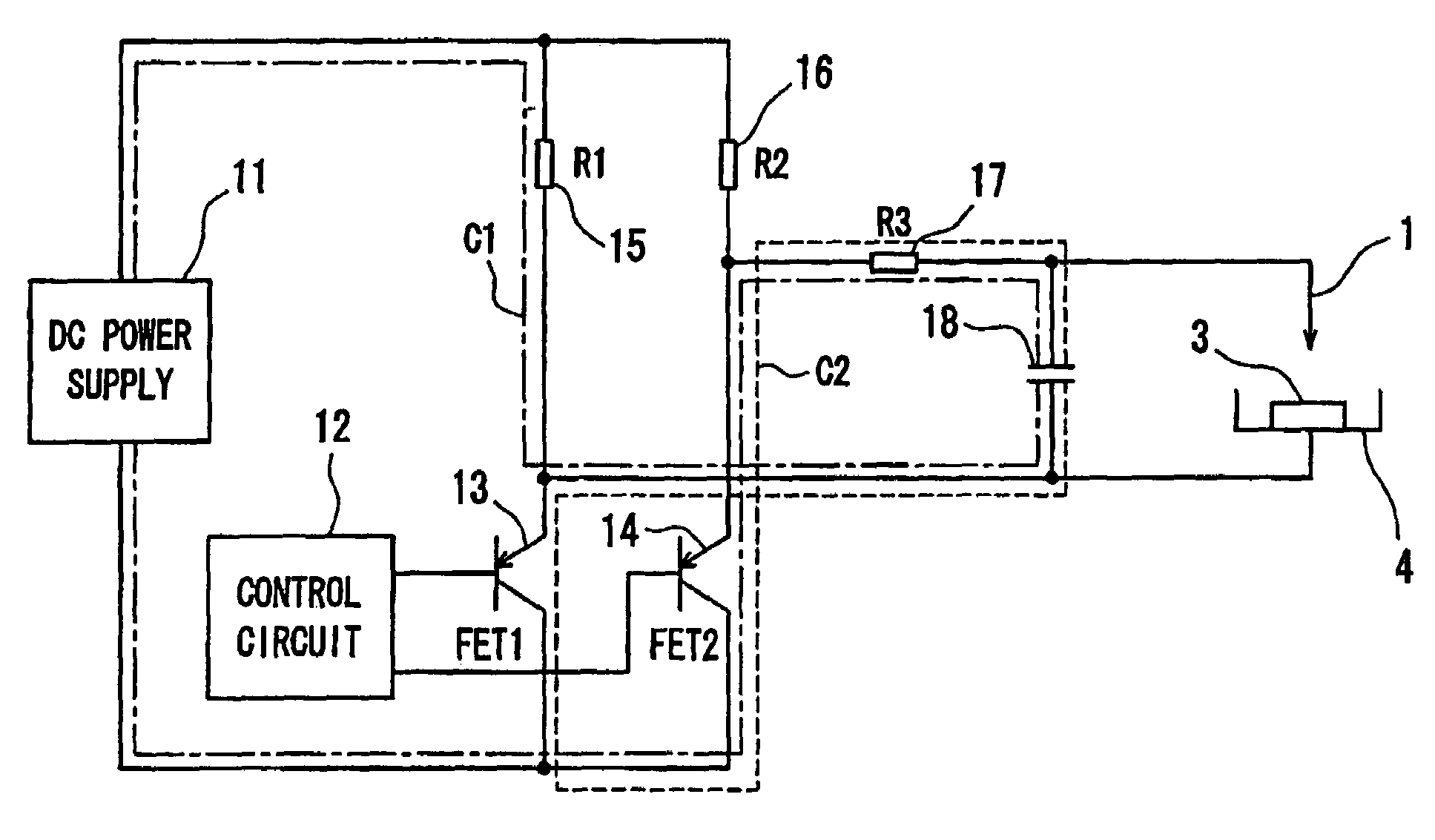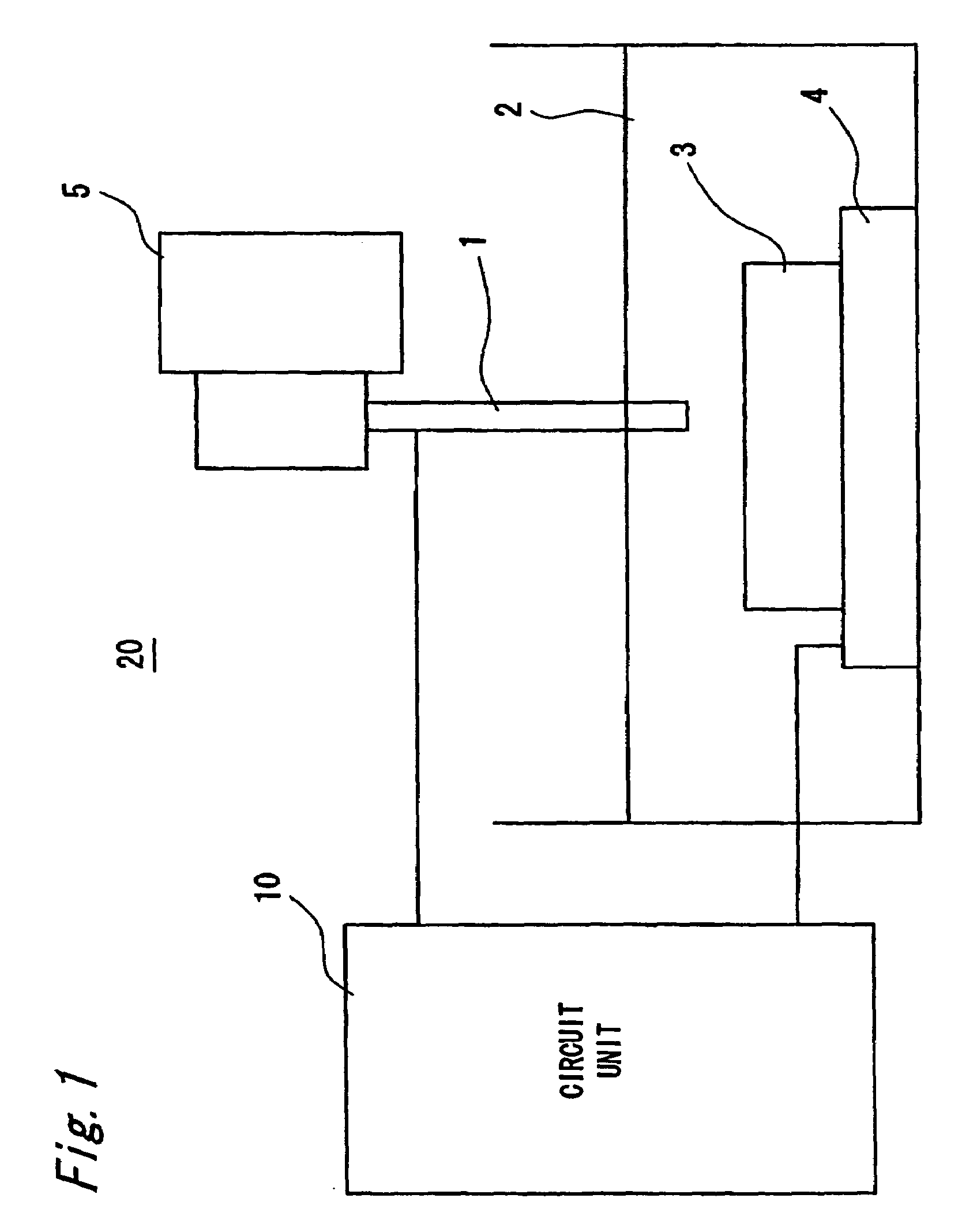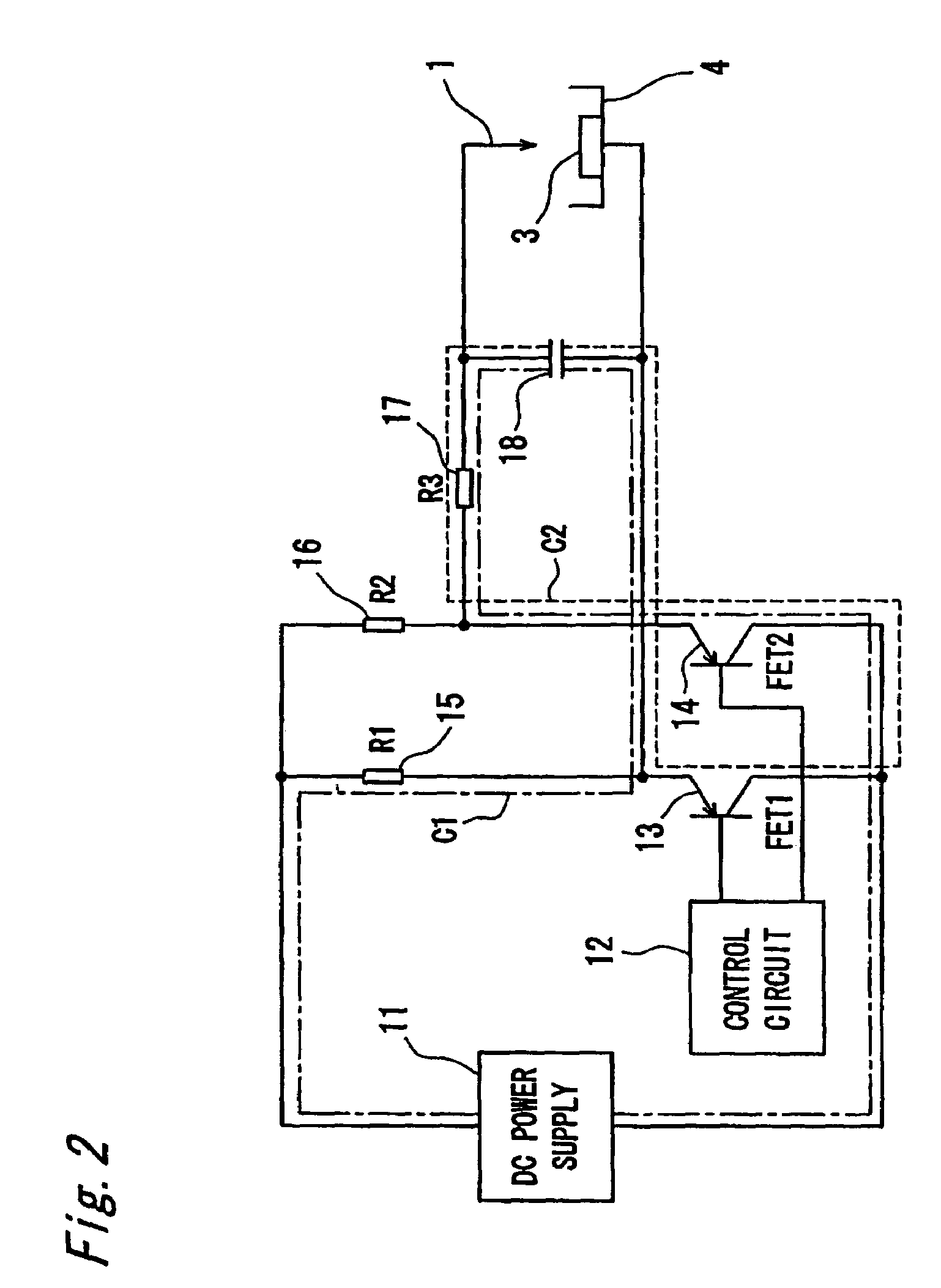Electrical discharge machine power supply
a technology of electric discharge machine and power supply, which is applied in the direction of electrical-based machining apparatus, metal-working apparatus, manufacturing tools, etc., can solve the problems of long machining time, increased machining cost, and increased machining cost, so as to reduce the ionization of working fluid, shorten the application time of voltage pulse to the tool electrode, and improve the effect of machining efficiency
- Summary
- Abstract
- Description
- Claims
- Application Information
AI Technical Summary
Benefits of technology
Problems solved by technology
Method used
Image
Examples
first embodiment
[0054]FIG. 1 shows a schematic configuration of an electrical discharge machining apparatus 20 according to a first embodiment of the invention. The electrical discharge machining apparatus 20 includes a tool electrode 1, a drive unit 5 that vertically moves the tool electrode 1, a work (work piece) electrode 4 that supports a work 3 made of metal and the like immersed in a working fluid 2, and a circuit unit 10 that is electrically connected to the tool electrode 1 and the work electrode 4. The work 3 is placed and fixed onto the work electrode 4. The tool electrode 1 is located opposing the work electrode 4 with a predetermined gap therebetween. The work 3 and at least a leading end portion of the tool electrode 1 are immersed in the working fluid 2 such as deionized water having relatively high insulating characteristics. Then, the gap between the tool electrode 1 and the work 3 is filled with the working fluid 2. When a potential difference or a distance between the tool electro...
second embodiment
[0074]FIG. 10 is a schematic view showing a circuit configuration of an electrical discharge machining apparatus according to a second embodiment of the invention. As shown in FIG. 10, the electrical discharge machining apparatus according to the second embodiment differs from the electrical discharge machining apparatus according to the first embodiment in the configuration of a circuit unit 10a. The circuit unit 10a differs in that the circuit unit 10a includes a current detector 19a that detects the current passing between the tool electrode 1 and the work electrode 4, and a voltage detector 19b that detects the voltage applied between the tool electrode 1 and the work electrode 4. The current detector 19a and the voltage detector 19b are connected to a control unit 12a, and measured voltage data and current data are inputted to the control unit 12a. The capacitor 18 is charged by applying the voltage outputted from the direct-current power supply 11 (DC power supply) constitutin...
third embodiment
[0123]The case in which the electrical discharge machining of a metal plate 100 is performed to make a through-pore by adopting the electrical discharge machining method according to the invention will be described with reference to FIGS. 18 and 19. FIG. 18 is a sectional view of the metal plate 100 that has oxide films 101 and 102 on its surfaces. In this case, it is assumed that the portions that are oxidized on the surfaces of the metal plate 100 are the oxide films 101 and 102 and the portion that is not oxidized is a metal portion 103.
[0124]FIG. 19A is a timing chart of the voltage pulse applied between the tool electrode 1 and the work electrode 4. FIG. 19B shows the case in which the electrical discharge is detected for the applied voltage pulse. FIG. 19C shows the case in which the conduction is detected for the applied voltage pulse. The portions represented by zones A1 and A2 show the machining of the oxide film 101, the portions represented by zones B1, B2, and B3 show th...
PUM
| Property | Measurement | Unit |
|---|---|---|
| diameter | aaaaa | aaaaa |
| peak voltages | aaaaa | aaaaa |
| current | aaaaa | aaaaa |
Abstract
Description
Claims
Application Information
 Login to View More
Login to View More - R&D
- Intellectual Property
- Life Sciences
- Materials
- Tech Scout
- Unparalleled Data Quality
- Higher Quality Content
- 60% Fewer Hallucinations
Browse by: Latest US Patents, China's latest patents, Technical Efficacy Thesaurus, Application Domain, Technology Topic, Popular Technical Reports.
© 2025 PatSnap. All rights reserved.Legal|Privacy policy|Modern Slavery Act Transparency Statement|Sitemap|About US| Contact US: help@patsnap.com



